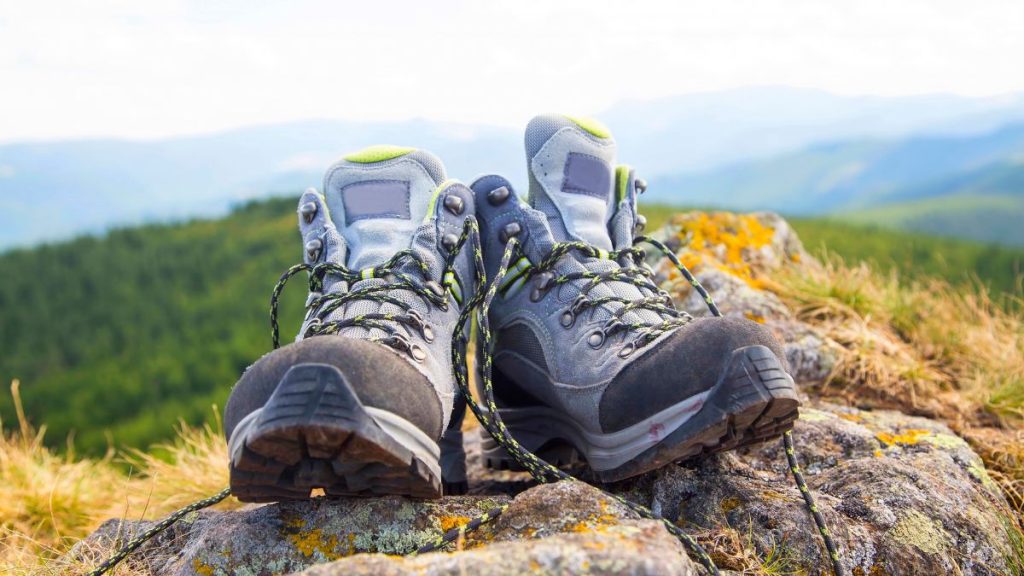Blundstone boots can be a reasonable option for light and casual hiking. Still, for more intense or challenging hiking adventures, investing in purpose-built hiking boots that offer specific features tailored to those activities is recommended.
Blundstone Boots
Blundstone is a popular brand of footwear specifically known for its rugged and versatile design. Blundstone boots are made from high-quality leather and are designed to be sturdy, reliable, and withstand tough conditions. These boots are popular among diverse people, from workers who need durable footwear for labor-intensive jobs to outdoor enthusiasts who appreciate their comfort and durability during hiking and other outdoor activities.
Features of Blundstone Boots

Blundstone boots are well-known for their durability, comfort, and versatile style. While they are popular for everyday wear and light outdoor activities, there might be better choices for serious hiking or demanding terrains. Here are a few factors to consider when evaluating whether Blundstone boots are suitable for hiking:
- Traction and Support: Blundstone boots typically have a sturdy sole, but their traction and support might not be as robust as hiking-specific boots. For more challenging hiking trails that involve steep ascents, descents, or rocky terrain, you’ll generally want footwear designed with specialized features for enhanced grip and stability.
- Ankle Support: Many hiking boots offer higher ankle support to prevent injuries on uneven terrain. Blundstone boots tend to have a lower profile, which might provide a different level of ankle support for rigorous hiking.
- Water Resistance: Some Blundstone models offer water resistance to a certain extent, but dedicated hiking boots often provide more advanced waterproofing and protection against wet conditions.
- Cushioning and Comfort: Blundstone boots are praised for their comfort, but hiking boots often have specialized cushioning and footbed technologies designed to provide comfort during long hikes.
- Weight: Hiking boots are designed to be lightweight yet durable, essential for reducing fatigue during extended hikes. Blundstone boots may not be optimized for this level of lightweight performance.
Comparing Blundstone Boots to Hiking Boots

Blundstone boots and hiking boots are two distinct types of footwear, each designed with specific purposes. Let’s compare them in terms of their features, uses, and differences:
Blundstone Boots
- Design: Blundstone boots are typically characterized by their slip-on design with elastic side panels. They often have a rugged and casual appearance.
- Construction: Blundstones are usually made from high-quality leather, which makes them durable and weather-resistant.
- Comfort: They are known for their comfort due to their ergonomic design and cushioned soles.
- Versatility: Blundstone boots are versatile and suitable for casual and light outdoor activities. They are often favored for urban settings and everyday wear.
- Ease of Use: Their slip-on design allows for easy on and off, making them convenient for quick outings.
- Traction: While Blundstone boots offer some traction, they are specifically designed for something other than demanding outdoor terrains.
Hiking Boots
- Design: Hiking boots come in various designs, including low-cut, mid-cut, and high-cut styles. They are designed to provide ankle support and protection on uneven terrain.
- Construction: Hiking boots are constructed with a focus on durability, support, and protection. They often use materials like leather or synthetic fabrics combined with waterproof membranes.
- Comfort: Modern hiking boots are designed for comfort during long hikes, with cushioning, arch support, and breathable materials.
- Versatility: Hiking boots are designed for outdoor activities, especially hiking on trails and rugged terrains. They provide stability, protection, and grip, making them ideal for various weather conditions.
- Terrain: Hiking boots have specialized outsoles that offer enhanced traction and grip on surfaces, including slippery rocks and muddy trails.
- Specialized Features: Some hiking boots include reinforced toe caps, gusseted tongues (to keep debris out), and compatibility with crampons for more technical terrains.
Differences
- Intended Use: Blundstone boots are more suited for casual wear and light outdoor activities, while hiking boots are specifically designed for trekking and hiking on rugged terrains.
- Ankle Support: Hiking boots usually offer better ankle support due to their higher cut, which helps prevent injuries on uneven ground.
- Terrain Adaptability: Hiking boots are better equipped to handle challenging terrains, thanks to their specialized outsoles and rugged construction.
- Activity Level: Hiking boots are designed for more physically demanding activities, while Blundstone boots are better suited for casual strolls and urban settings.
In summary, choosing between Blundstone boots and hiking boots depends on your intended use. If you’re looking for comfortable everyday footwear with a casual style, Blundstones are a good choice. However, hiking boots are the more suitable option if you’re planning on hiking or spending time on rough trails due to their specialized features and enhanced performance on challenging terrains. Top of Form
10 Alternatives to Blundstone Boots
Several other brands and styles of boots offer similar comfort, durability, and versatility. Here are a few recommendations:
- Redback Boots: Redback is an Australian brand known for its work boots, similar to Blundstone. They offer a variety of styles and features suitable for different environments and activities.
- Dr. Martens: Dr. Martens’s boots are iconic for their distinctive style and durability. While they have a more distinctive look than Blundstone, they offer a wide range of styles that suit various preferences.
- Timberland: Timberland boots are well-known for their rugged construction and outdoor durability. They come in various styles and are great for work and casual wear.
- Wolverine: Wolverine produces durable work boots focusing on comfort and craftsmanship. They offer options with various safety features and designs.
- Caterpillar (CAT) Footwear: CAT Footwear offers a selection of work and casual boots known for their durability and toughness.
- Keen Utility: Keen is known for their comfortable and functional footwear. Keen Utility boots are designed for work environments and provide a good balance of protection and comfort.
- Chippewa Boots: Chippewa is a brand specializing in high-quality, handcrafted boots. They have a variety of styles ranging from classic work boots to more modern designs.
- Ariat: Ariat is known for its Western-style boots that are not only stylish but also offer comfort and durability.
- Georgia Boot: Georgia Boot offers a range of work boots designed for durability and protection. They have options for various work environments.
- Carhartt Footwear: Carhartt is a well-known brand in workwear, and its footwear line up includes boots built for durability and comfort.
Conclusion
Blundstone boots are generally not designed specifically for hiking but are known for their durability, comfort, and versatility. Blundstone boots are often used as casual or work boots due to their rugged construction and slip-on design. They are commonly used in various outdoor activities, but their suitability for hiking depends on the hiking you plan.
Some people find Blundstone boots comfortable and adequate for light and casual hiking on well-maintained trails or easy terrain. They provide good ankle support and are generally durable, which can benefit shorter hikes.


